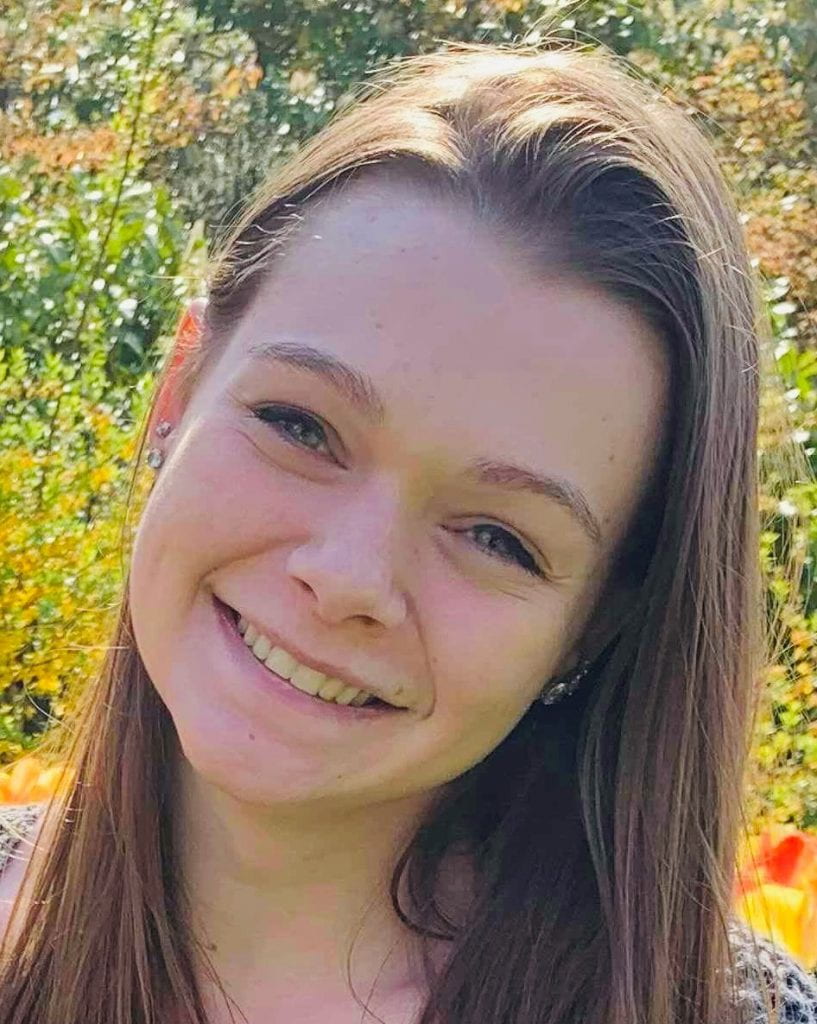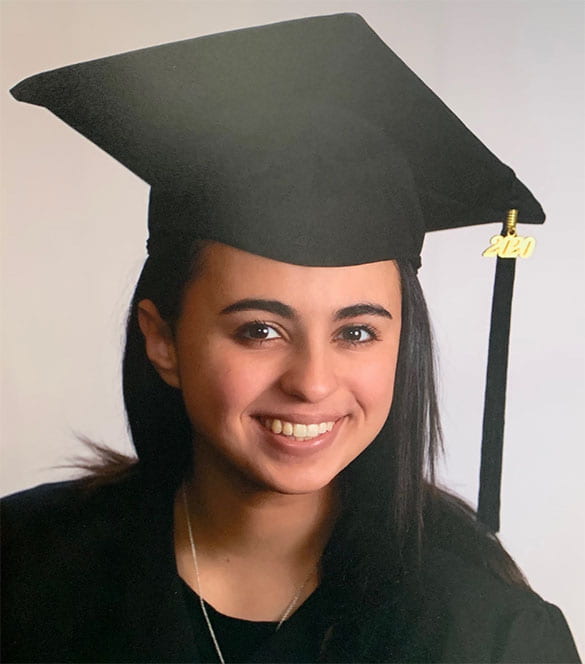Timing of pandemic deepens learning experience for Immunology course students
By Nick Wesman ’20G
For the past several years, Dr. Charles R. Toth, associate professor of biology and department chair, has utilized assignments called “Outbreak” and “Build-a-Virus” to illustrate to students the development, impact, and transmission of viruses.
This past spring semester, the 22 students in his Immunology course had the unusual experience of seeing their work in class parallel the global response to the COVID-19 viral outbreak.
“When we first learned about these assignments in January, I just thought they looked interesting,” said Cassandra Phillips ’20 (Norton, Mass.).
“But by the time March rolled around, and everything started going downhill quickly, they took on a whole different perspective. It went from something that could happen to something that is happening.”
Outbreak is a lab assignment Toth adapted from a similar project developed by Tammy Tobin, a professor from Susquehanna University in Pennsylvania.

For the assignment, Toth set the scene for lab groups: A hypothetical group of college students contracts an unknown illness on a spring break trip to Patagonia, South America. Working in groups of three or four, students in the Immunology course, acting as scientists with the CDC or WHO, were tasked with developing a plan to diagnose the illness and identify the source, treat and quarantine patients, and how to contain the virus.
Students were provided a “budget” of $75,000, which covered all their equipment and testing, as well as details such as travel and lodging expenses required by the scientists.
The Outbreak assignment was set up as an ongoing project; groups submitted their initial plan to Toth, who then provided feedback and new information, as if the crisis was unfolding in real time.
The parallels between the assignment and the realities of the COVID-19 pandemic were not lost on students in the course.
“The Outbreak assignment, doing that side-by-side with the coronavirus, was really interesting because you hear about how experts are working while we’re doing it in class,” said Gillian Melikian ’20 (Johnston, R.I.). “It really showed the real-world application of what we’re learning.”
“We were able to look at what seemed to be working and what wasn’t in the COVID-19 response. You’re getting ideas from what you hear in the news,” added Phillips. “I couldn’t separate what I was doing in the assignment from what was going on around the world.”
After addressing their hypothetical, but altogether relevant, viral outbreak, students were asked in their final exam to focus on the virus itself.
Part II: The Build-a-Virus exam
That exam, titled by Toth as Build-a-Virus, required students to apply their knowledge of viruses and how they impact the body to design a fictional, but realistically behaving, virus that could be both highly contagious and life-threatening.
Like Outbreak, the virus-building exercise required a lot of back-and-forth between students and Toth.
Given the current climate, Toth felt both assignments held the potential to be traumatizing for students. Before going through with them, the class discussed their feelings about whether the assignments would make students uncomfortable.
“I talked to the students before assigning the work because it hit close to home with the current pandemic. They didn’t have any objections, and it ended up being really engaging,” he said. “In this case, the work meant a little more.”
Students appreciated the experience Outbreak and Build-a-Virus provided and in the end helped them to a deeper understanding of COVID-19 and the work it takes to mount a response to a viral outbreak.
“I understood that even though the assignments Dr. Toth was giving us were projects, they were potentially real things that could happen,” said Melikian. “They helped me realize how difficult it is to respond. You develop a deep appreciation for what these scientists do to keep us safe.”
For Melikian, the assignments took on a very personal meaning. During the semester, the biology major and her father both tested positive for the coronavirus. Her experience drove home the importance of what she was learning.

“When you hear about pandemics historically, like the Spanish flu, you understand what happened but you don’t actually go through it yourself,” she said. “I think seeing what my dad went through, and my experience testing positive, made me take these assignments much more seriously and get as much out of them as I could.”
Both projects illustrate Toth’s approach to teaching biological concepts. Immunology itself is not a required course for biology majors, but many students preparing for careers in the health and medical fields enroll for its practical approach.
“We as teachers always try to make course material relevant. If you don’t make it applicable to what students are interested in or what they might come across, it won’t be as meaningful,” said Toth. “In both these cases, the projects allowed students to take what they learned in the classroom and apply it to the real world.”
For Phillips, a biology and psychology double major and neuroscience student, seeing the response from the scientific field play out alongside her work on the projects served as confirmation of her path into research.
“We see all the scientists on the news and everybody who’s working so hard on a vaccine and a treatment. I don’t plan on studying immunology, but in the end, I want to help people. This was a reminder of what I want to do. I’m looking forward to being a help in the future,” said Phillips, who will enter the Ph.D. program in biological and biomedical sciences at the University of North Carolina at Chapel Hill this fall.
“Dr. Toth puts a lot of effort into crafting assignments so that you don’t forget them,” said Melikian. “He gets you to think critically and internalize what you’re learning so that one day you can apply it.”
Given the circumstances of this past semester, students likely won’t soon forget the skills and information they learned in this spring’s Immunology course.





